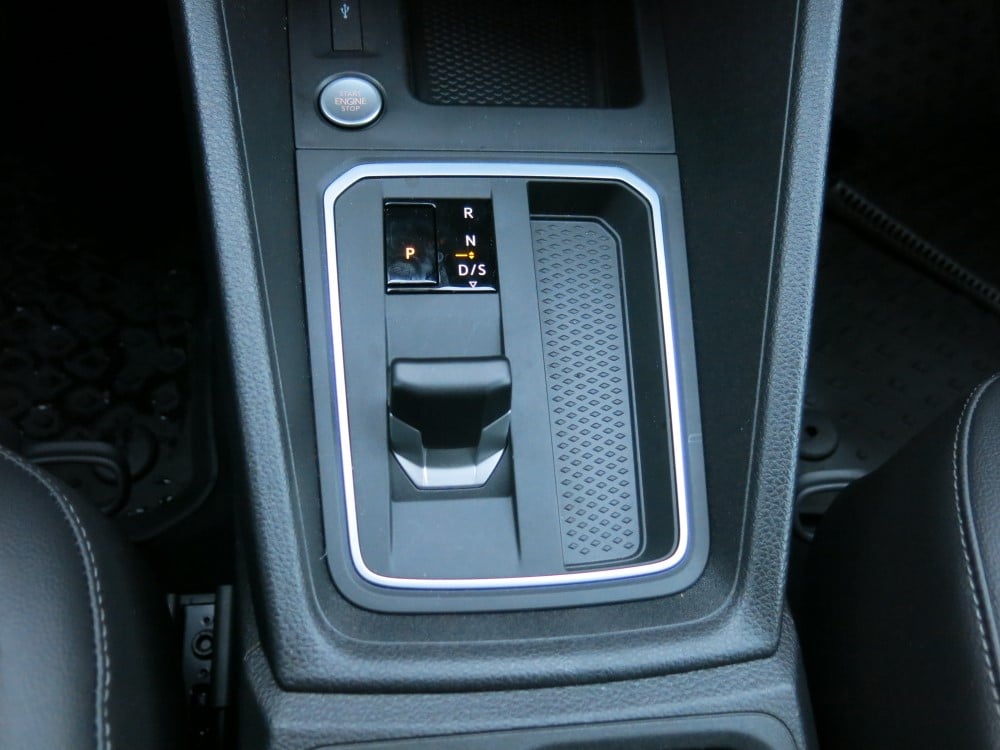Volkswagen’s Caddy minivan has been completely redesigned.
The Caddy has been on the market for over 40 years. The first model was launched on the US market in 1978 and came to Europe in 1982. The second generation was launched in 1995, the third in 2003 and the fourth in 2015.
This is the fifth generation of the Caddy.
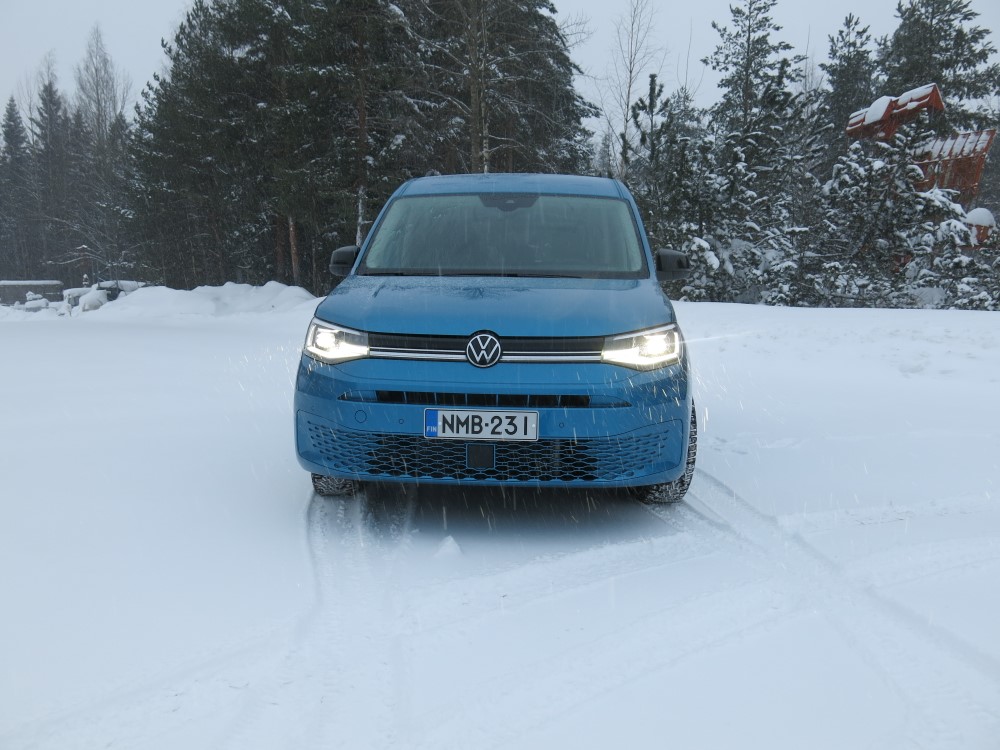
Caddy is available in both passenger car and van versions. Just over 500 passenger cars and 350 to 400 vans are sold each year.
The Caddy passenger car belongs to the A-segment, of which around 2,000 to 2,500 are sold in Finland each year. Last year the number was just under 2000.
A third of the passenger car versions are taxis and, according to K-Auto, the Caddy is the third most popular taxi car in Finland.
The new Caddy is based on Volkswagen’s MQB platform concept. It enables alternative propulsion systems, including gas and charging hybrids. However, there is no information yet on their market launch. At launch, only diesel and petrol will be available.
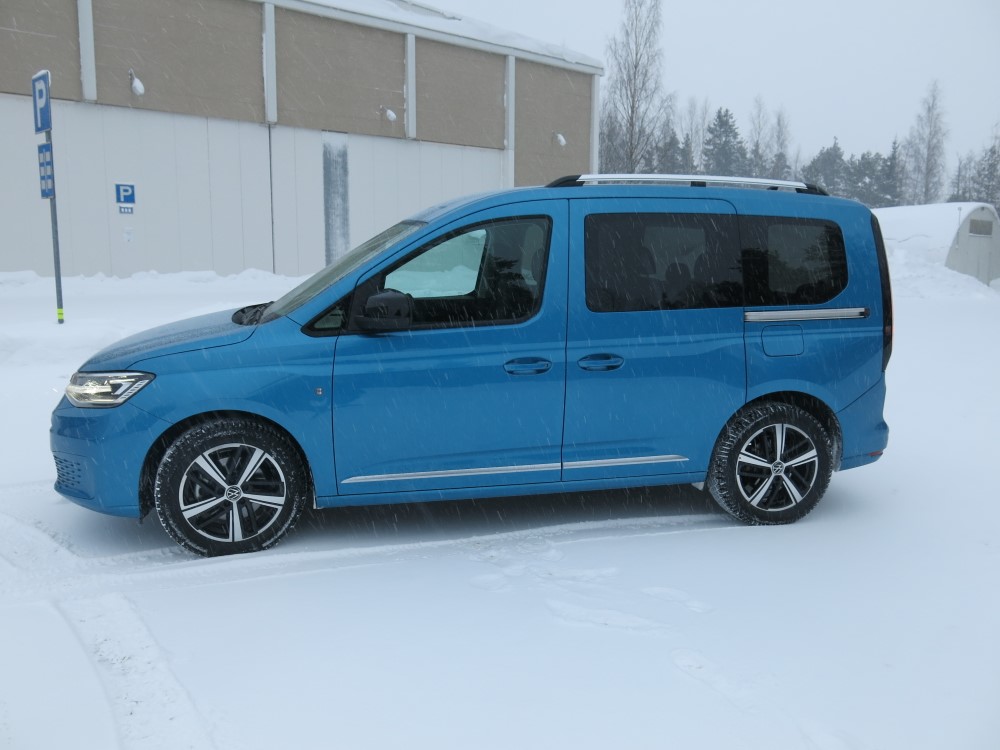
The Caddy is available with two wheelbases. The standard wheelbase car has increased in length by 93 mm and in width by 62 mm. The longer wheelbase model has shortened the body by 24 millimetres.
The new Caddy has many new features. Among other things, the car has a new multifunction steering wheel, keyless start and lock, AGR-certified seats, LED lights and LED headlamps. There is also an electronic locking system for the sliding doors and tailgate and a 230-volt socket.
The passenger version features a new 1.4 m² glass panoramic roof. The roof reflects thermal radiation and absorbs 95% of light.
The car now has an electric handbrake.

Cargo version with two Europlates
The cargo version has full-panel tailgate and separate locking for the boot. The backrest of the front passenger seat folds down into a work surface if required.
The cargo version also comes with a reversing camera and separate elbow rests for the driver and front passenger seats.
The rear axle leaf springs have now been replaced by coil springs. The Maxi version can now accommodate up to two Euro pallets. The size of the side door has been increased to 845 mm, meaning that the Euro pallet can also be accessed through the side door.
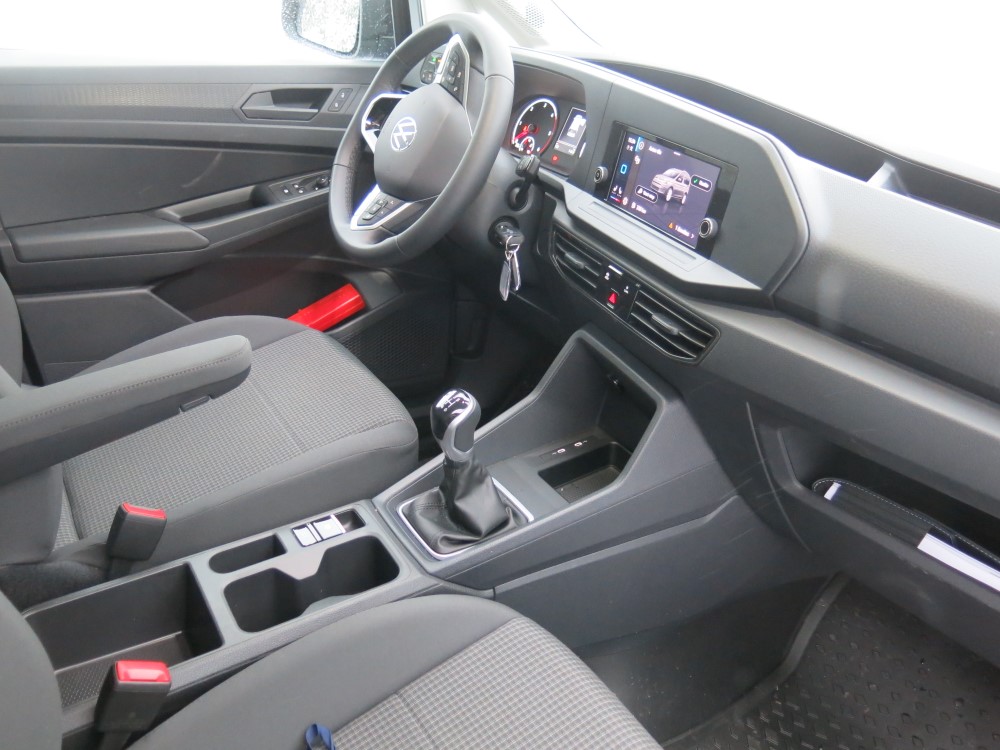
The width between the wheel arches is 1.23 metres and the loading length is 1 797 millimetres, and 2 150 millimetres in the Maxi version.
The Cargo version is available with a fuel-fired auxiliary heater with timer and remote control.
The partition has a window with a grille. Heating and a washer and wiper are available for the rear double doors with windows.
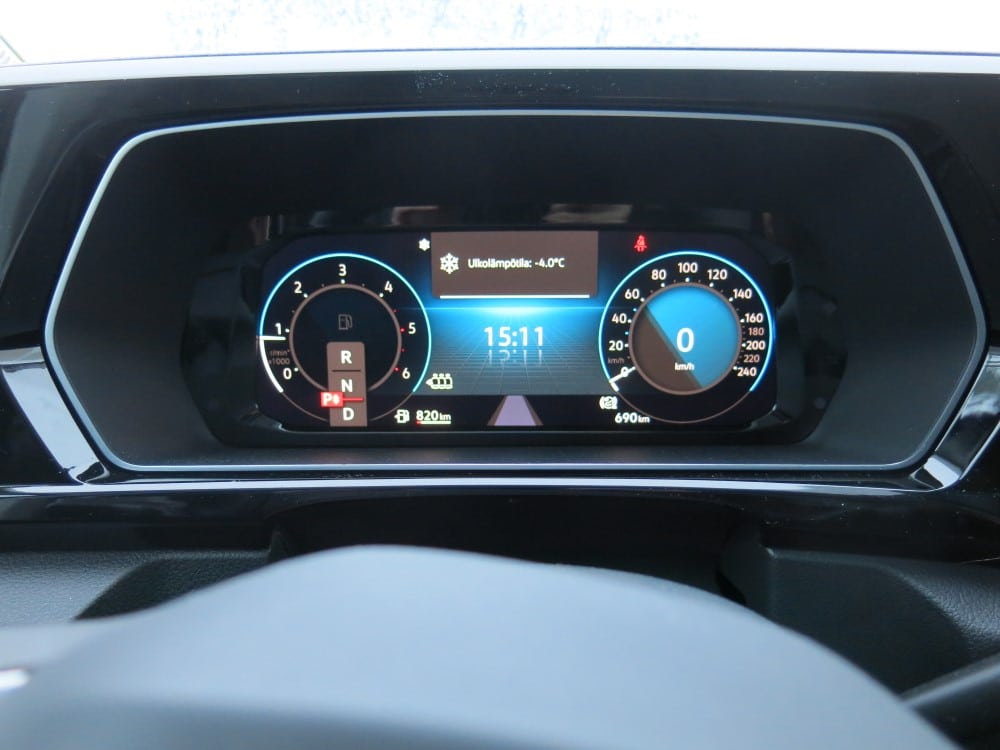
New and upgraded assistance systems
A total of 19 driver assistance systems are available.
New systems include lane change assistance, trailer assist, emergency stop and cross-traffic warning. There is also Travel assist, which includes cruise control.
Advanced systems from earlier versions include parking assist, lane departure warning, reversing camera, traffic sign recognition, high beam assist, hill start assist and fatigue detection.

The passenger version has front and side airbags and a centre airbag between the seats. Rear passengers have side airbags.
The van version also has front airbags, side airbags and a centre airbag.
The passenger car version is available in four different versions, Kombi, Caddy, Life and Style. There is only one version of the van model, Cargo.
The five-seater passenger car model has a very large boot. the 7-seater is much smaller. In the seven-seater version, two seats in the third row can be removed.

Four engines
Three diesel engines and one petrol engine are available.
The diesel engine options are the 2.0-litre TDI engines. Three power outputs are available, 55 kW, 75 kW and 90 kW. The petrol engine is the 1.5-litre TSI with a power output of 84 kW.
The range is available with a 6-speed manual gearbox and a 7-speed dsg automatic. Four-wheel drive is also available on the most powerful diesel model.
The lowest price for a cargo model is EUR 24 762 and the passenger car version costs just over EUR 34 000.
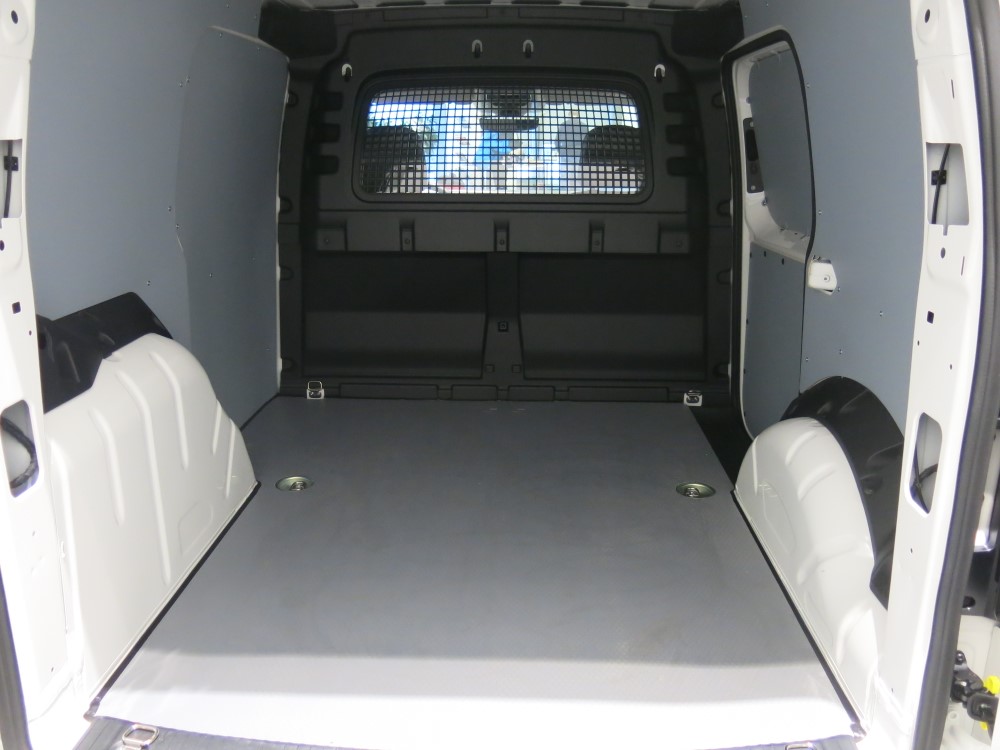
Passenger car
When you start driving, you get the settings just right. The car is very much a passenger car when it’s on the move. The suspension works well and the coil springs, which are also available in the van version, give a much softer feel. The earlier van versions had leaf springs in the rear.
The cabin has also been significantly digitalised. The traditional instrument panel has been replaced by a digital display of over ten inches. In the centre of the dashboard is an 8.25-inch touchscreen. In the best-equipped passenger car version, this screen is ten inches.
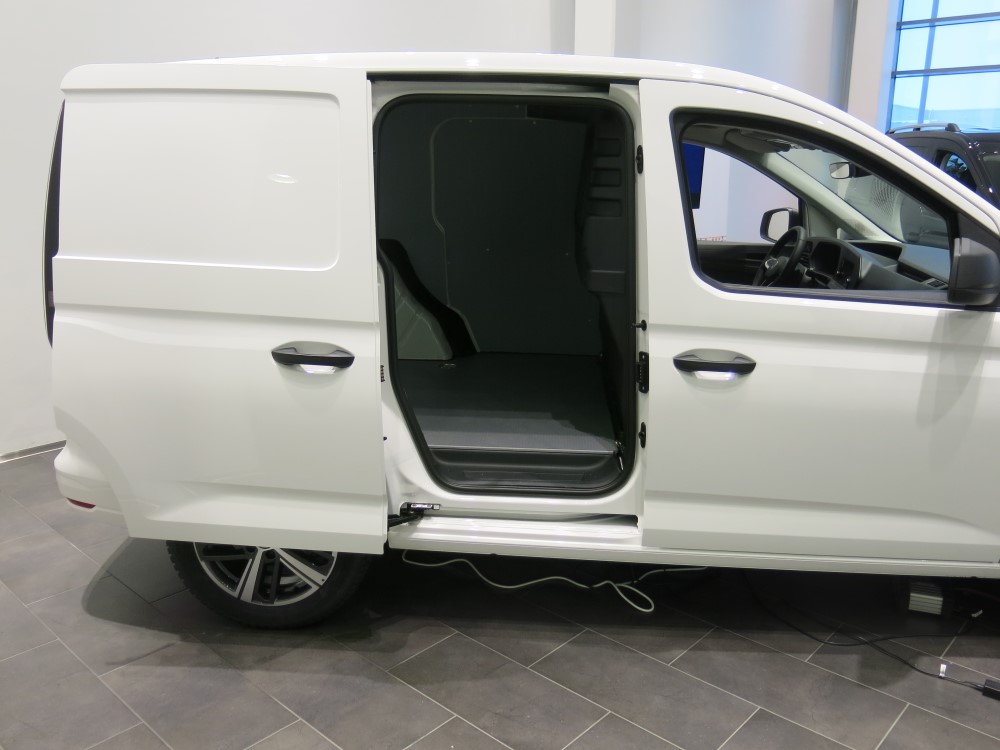
The gear stick for the dsg automatic, which no longer exists, is also a modern feature. The stick is replaced by a small knob that selects the desired gear.
A short test drive left a pleasant impression of both the passenger and van versions. The Caddy is clearly a big step forward.
